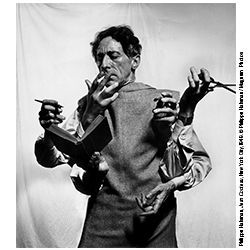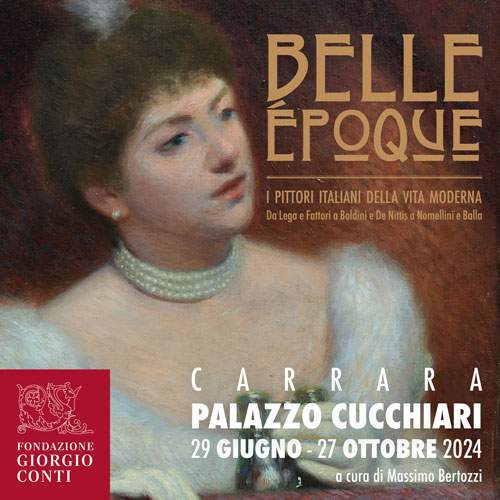Between Wunderkammer and science: the Museum of Natural History from the Charterhouse of Calci
In the flourishing Val Graziosa, at the foot of Monte Pisano, the monumental and ebony Certosa di Calci stands out against the green meadows and woods. It is an articulated monastic complex that from the mid-14th century until the 1970s kept its function intact. Instead, today it is an important tourist attraction as it is possible to visit the monumental part of the building, but part of the structure also houses the Museum of Natural History of the University of Pisa.
The museum institution inside the Carthusian Monastery stands as a visit of great interest to audiences of all ages, with a very rich and varied collection whose origins are centuries old. “Veggasi anchasi di grazia la galleria hoggi da Vostra Altezza Serenissima eretta in Pisa, ove si trovano di già raccolte tante sorti di miniere, pietre tanto varie e singulari e cose innumerabili dalla natura come per miracolo prodotte e con esatta diligenza ricerche da tutte le parti del mondo, che par par par cosa incredibile essersi potuto in un solo luogo ridurre tanto vago e dovizioso tesoro e di tante cose fabricato, da trattenere et esercitare lungo tempo qualunque erudito ingegno.” thus was magnified in the 1597 text Ricettario Fiorentino di nuovo illustrato (Florentine Recipe Book of Newly Illustrated ) the gallery desired by the Tuscan Grand Duke Ferdinand I dei Medici, different from its Florentine sister, since in this one the main interest was in works of nature and not antiquarian, and it had to put didactic and cognitive needs before mere curiosity and amazement.
The gallery was born next to the Orto dei Semplici, now known as the Botanical Garden of the University of Pisa. In spite of its pedagogical intentions, it reflected in its eclectic collections the encyclopedic taste of the time, the same as that found in the European collections gathered in the cabinets de curiosités where exhibits were displayed that were chosen for their singularity, extravagance, beauty and rarity and that reflected the interest of their founders, generally nobles, sovereigns and scholars. These rooms, which are also known as Wunderkammer (chambers of wonders), would lay the foundations of collecting and establish themselves as prodromes of museums. The Grand Ducal family’s attention to the Pisan collections remained high until the mid-17th century, when it began to wane as it was diverted from Florentine institutions. To make up for this were the prefects of the Orto, who still had power over the gallery at that time, and they enlarged its collection, so much so that several times it was necessary to intervene on the building that housed it, then in Via Santa Maria in Pisa.



With the advent of the Enlightenment, a more scientific and systematic rigor was preferred to the encyclopedic and stupefying approach, going on to establish more and more autonomous and specialized collections. This led in the 19th century, thanks in part to the figure of the erudite Paolo Savi, to the establishment of a Natural History Museum independent of the Garden, which became one of the most sought-after and prestigious museums in Italy. Then, after World War II, a large part of the collections remained closed to the public for a long time, until it was decided in 1980 to move the museum inside the Charterhouse, which had been left empty for a few years by the now extinct religious order.
The museum’s endless collections are now divided into thematic nuclei, which are divided into different spaces, creating multiple paths. The historical gallery reconstructs the history of the museum and the people involved in its creation and also shows how the approach to collecting, knowledge and cataloging has changed.
Here, in fact, is an evocative reconstruction of the Chamber of Wonders, the original core of the museum: in a seventeenth-century style room, a horror vacui of artifacts, naturalia (exhibits from the three kingdoms of nature), curiosa (strange and exotic objects) and artificialia (artifacts from different places and eras) is distributed within austere cabinets. Also preserved among minerals, fossils, shells and other oddities is the "petrified human head over which a coral gill was born," perhaps the collection’s most famous piece in the past. It was bought at the behest of the Grand Duke in Sardinia, but the skull has in time turned out to be a fake. Other original items in the collection include the monkey teeth necklace, the coral hand “that makes a chestnut,” and a Nautilus shell with engraved decorations.
But the galleries also contain original documents, valuable collections such as that of gastropods and marine invertebrates, and a reconstruction of the study of Paolo Savi, who covered the post of museum director from 1823 until 1871. Savi was also a virtuoso taxidermist, and on display here are some of the dioramas he gave life to, featuring animal hunting scenes, as well as wax models.
The archaeocete room shows an in-depth look at the ancestral ancestors of modern cetaceans, who lived between 50 and 35 million years ago. Then we come to the cetacean gallery, of its kind one of the richest and most important collections in Europe, arranged in the long gallery that was once the monks’ place of recreation, where full-size models, complete skeletons and fossils of the cetacean family, dolphins and whales, are displayed. The highlight is a giant blue whale skeleton, the largest animal ever to live on earth.




The exhibition also includes a remarkable collection of land mammals, consisting of more than 300 specimens that give an extremely broad overview of the world’s biodiversity, although some species are endangered, as the captions in the room indicate. Equally interesting is the section on reptiles and amphibians. Through the mineral collection, meteorites are admired, including theBagnone octahedrite, a 48-kilogram meteorite, the largest preserved in Italy and found near Massa Carrara. The section then continues with the minerals of Tuscany, a collection of more than 400 specimens, including huge geochronite crystals from Valdicastello, samples of marble minerals from the Apuan Alps, and large quartz geodes.
Great attention is also given to the educational dimension with workshops and entire areas with reconstructions, including the hall dedicated to human evolution, which through models and dioramas shows the evolutionary stages of man, the dinosaur hall, the gallery of geological eras, and the hall of the Prehistory of Monte Pisano, where the has been reconstructed “the Cave of the Lion of Agnano,” a famous karst cave frequented by humans since the Paleolithic period, when it was a shelter for hunters but whose frequentation is also attested in Etruscan and then Renaissance times. Of great fascination especially for younger visitors is the room “Between Myth and Science” in which aNoah’s Ark measuring 9 meters by 5 meters has been replicated, with animals attached, and capable of bringing a reflection on biodiversity. Concluding the tour isItaly’s largest freshwater aquarium, where more than 100 species of fish, from those found in our territory to those from other continents, can be seen in 500 square meters.
The museum then is embellished by its arrangement in ancient and fascinatingly charged rooms, once a place of retreat and monastic life, now deputed to the dissemination of knowledge, and by spaces that constantly open onto imposing architectural views and the greenery of the surrounding countryside and cloisters.
Warning: the translation into English of the original Italian article was created using automatic tools. We undertake to review all articles, but we do not guarantee the total absence of inaccuracies in the translation due to the program. You can find the original by clicking on the ITA button. If you find any mistake,please contact us.




















